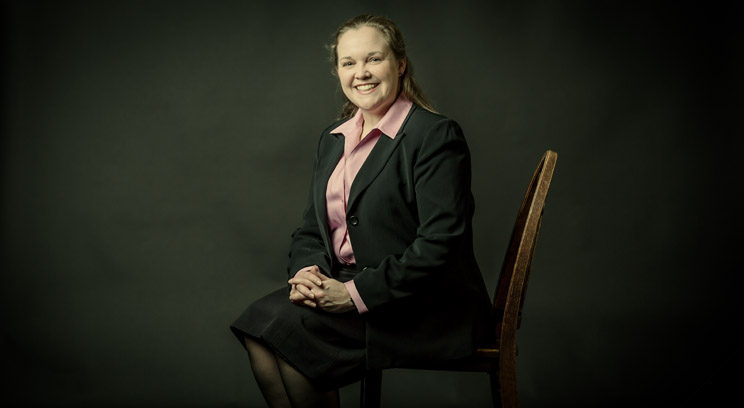Return on wealth. Valuation. Market share. These are just three benchmarks on which corporate leaders are graded. They’re also used to grade students in the Full-time UST MBA program.
The real business world, in a simulated form, is recreated at the Opus College of Business’ Minneapolis campus. Students working toward their Master of Business Administration in the Full-time UST MBA program are leaving with skill-sets others may take decades to learn.
Ten Years Strong
This spring, members of the 10th full-time MBA graduating class will receive their diplomas, joining the 404 graduates of the first nine years of the program.
Course content is tweaked regularly, keeping students current with best practices in business. Professors have come and gone, and technology has changed. Despite those variances, a graduate this spring will have the same solid business experience as the inaugural students who started in the fall of 2002.
“We extensively researched all the best full-time MBA programs across the country,” said Teresa Rothausen-Vange, founding director of the Full-time UST MBA program. “We looked at Harvard, Georgetown and all the top Catholic universities that had full-time MBAs. We took time building this program and taking what we thought were the best elements from the top-ranked MBA programs in the nation, while retaining the unique differences St. Thomas has always had.”
The full-time and part-time UST MBA programs consist of 61 required credits. Students earn the same credentials but take much different routes to graduation. In their 21-month experience, full-time students work closely with a cohort of peers, mirroring current business structure, and working with teams on projects.
Students in the full-time program earn credits in the Applied Communications Lab and the Leader Development Lab. In 2002, the university was the first MBA program to offer the Leader Development Lab, a model now copied by many other top programs, including Stanford.
‘I hear and I forget. I see and I remember. I do and I understand.’ – Confucius
From the first week in the program through the last, students learn by doing.
The college utilizes LINKS business simulation software – “the most sophisticated business simulation software in the world,” according to Opus College of Business Dean Christopher Puto. Teams simulate companies that sell “set-top” boxes, such as cable, satellite and Internet devices that receive video signals and deliver them to a TV or DVR (think Apple TV, Roku and Google Chromecast).
“It allows us to create an entire industry environment with all the elements a firm faces: staffing, product design, supply-chain distribution and manufacturing plants. Students have to make decisions on all of these things. Other simulations usually focus on one aspect,” Puto added.
In the first semester, students work on teams using the simulation software to learn marketing strategies. They develop, price, distribute and promote the products, and receive weekly progress reports.
In the second semester, students switch teams within their cohort, as the simulated businesses continue to grow or lose market traction. The simulation takes a break during the third semester as CEOs are elected and teams drafted for the final capstone course, in which half the grade is based on the success and failure of the team’s simulation.
Students Elected as CEOs
After almost three full semesters in their cohorts, students use a silent balloting process to elect CEOs to lead four-person teams during the final semester’s capstone course. The CEOs draft colleagues to their teams based on specific interest areas such as financial analysis, consumer marketing and system development.
Teams bid to buy the various set-top box companies created in the first semester. They make weekly decisions about opportunities, product development, strategy, production and positioning in the global marketplace. They receive weekly feedback on sales results, market share, stock prices and bottom-line profits. Each week represents a yearly quarter.
This unique simulation enables students to more fully integrate all the elements of the MBA program: teamwork, analytical skills, communication skills, core disciplinary knowledge, strategic thinking and effective decision making.
‘We are producing results’
Graduates of the full-time program have gone on to careers with many local and national companies, including Deloitte, Disney, United Health Group, Lifetouch and the Federal Reserve.
Puto said he sees significant changes in each student who goes through the program, primarily in their confidence and ability to evaluate information to make useful, ethical business decisions.
“We see a transformation in every single student,” Puto said. “This is validated by their closest friends and relatives who come to graduation. I can’t tell you how many spouses and parents come up to me at our graduation reception and say, ‘I am overwhelmed by the change that I have observed.’
“What pleases me is the complete and total enthusiasm that our alumni carry with them as they leave the school. It’s not like that at every place. This indicates that we are producing results.”
Results born in a simulation and manifested in daily practice have helped develop effective, principled business leaders who think globally, act ethically and create enduring value for society. With 10 years on the books, it’s clear the Full-time UST MBA program is fulfilling the Opus College of Business mission.
Through the first nine years of the full-time program, several of the CEOs elected by students in the capstone course have stood out. Here are a few of their stories, detailing how the experience has helped them become effective leaders.
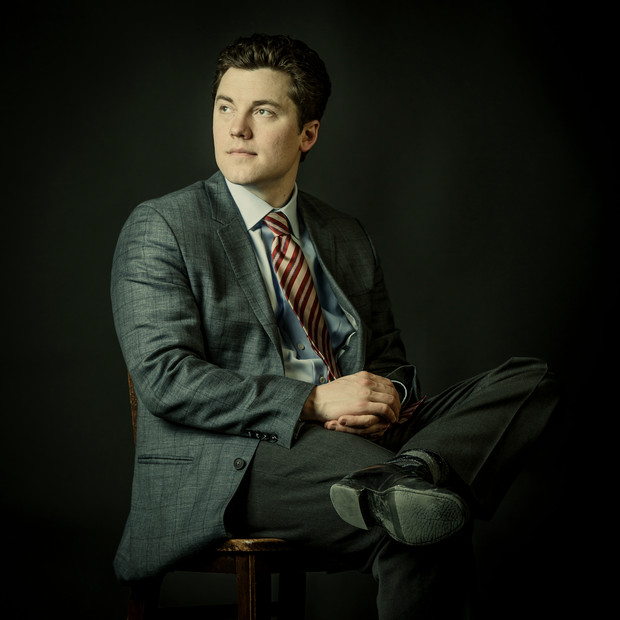
‘Respect the multiple ways people arrive at solutions’
After earning his M.B.A., Rupp made his way back to the pharmaceutical industry. He’s been promoted four times at Smiths Medical, where he’s currently the director of Global Airway, his second director-level position there. He looks back to his role as a capstone CEO as a major influence on his current leadership roles.
“I remember it being very humbling,” Rupp said. “Working in a team-based environment, you have to learn to respect the multiple ways people arrive at solutions. That really opened my eyes to the strengths of others and the different ways of getting to the same end goal.”
Rupp said his capstone team did very well in the simulation, increasing profitability quarter after quarter and achieving the highest total revenue in the class. He credits his team’s success to listening to the perspectives of others.
“Recognizing the strengths of others is something you need to be able to become quite proficient at,” Rupp said. “If you can put people in positions that really cater to their strengths, they’re going to be in a better position for success as a team, and you’re going to be a lot better.”
Rupp said he learned to customize each individual approach, putting every person in a position to be successful.
“One of the things I try to employ when I’m taking on a new assignment or working on a new team is listening first and helping establish an even playing field to discuss anything we’re trying to get done as a functional team. As a director in a leadership role, you’re really there to articulate the common objectives and empower those very capable people to help us get to that end goal,” Rupp said.
“If you have confidence in your team, and they’re making a recommendation, you’re trying to make sure they’ve done their homework or tested their assumptions. If the answer to that is ‘yes,’ hopefully your recommendation is the same one that your team is putting forward.”
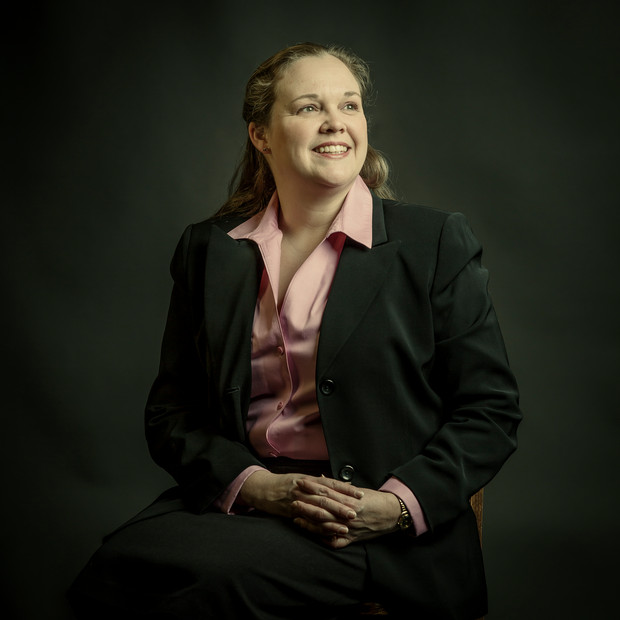 ‘An enduring spirit of resiliency’
‘An enduring spirit of resiliency’
Cristina Lien ’05 M.B.A.
One of five CEOs from the program’s first year, Cristina Lien came to the Full-time UST MBA program with a history degree from Yale University, experience as a selling manager at Marshall Fields and the first two years of her Master of Arts in Congregational Mission and Leadership from Luther Seminary, which she completed alongside her M.B.A.
Now the senior contract planning manager in food service sales at General Mills, Lien looks back on her time as a CEO as a great learning experience.
Lien’s team was behind the eight-ball from the beginning of the simulation. She said the team did not bid well when buying the company, leading to an outcome that did not meet the team’s expectations. She embraced the challenge, learning the leadership needed to deal with disappointment, failed expectations and frustration.
“Some were invigorated by the challenge,” Lien said. “Others were totally demoralized by it, getting the result we did. I had to learn how to manage people’s different reactions and how they interacted with each other. Did we do finger pointing? Did we all buck up? That was a significant challenge and learning experience.
“It’s one instance of many that have accumulated to cause me to be very expansive in my thinking,” she added. “It was solidifying what, at my core, is an enduring spirit of resiliency. Whether it’s of your own making or not, life deals its own challenges.”
Lien said she drafted a strong team of individual contributors. Her challenge was to coordinate their inputs and expertise into a shared vision for the group.
“Being an effective leader is about understanding what drives the people who work for you or that you are working with, and bringing out their best contributions, whatever that means for each person. That’s true of any of my team leadership opportunities.”
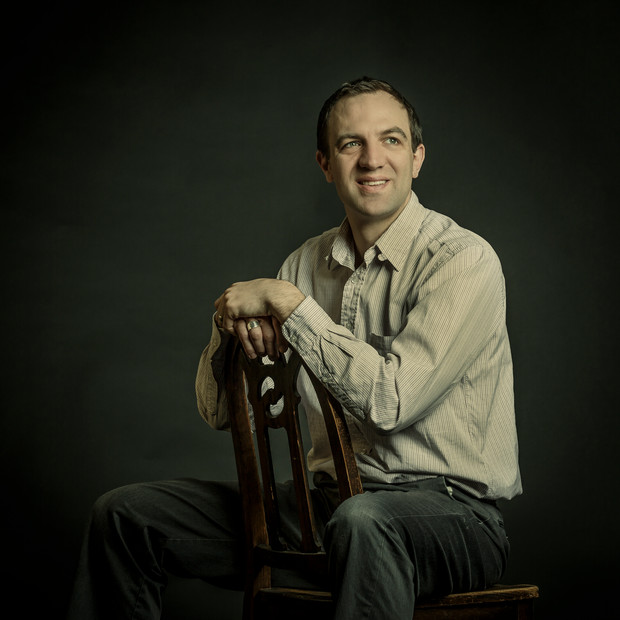 ‘I have to dangle carrots’
‘I have to dangle carrots’
Drew Kniffin ’09 M.B.A.
During the second year of his Juris Doctor program at the University of St. Thomas School of Law, Drew Kniffin decided to expand his education into a combined J.D.-M.B.A. degree. The ’03 Wharton College graduate earned his bachelor’s degree in economics with a minor in international relations, a skill-set that, combined with his St. Thomas education, positioned him well for the successes he’s experiencing at Cummins Power Generation.
Kniffin is the manager of project finance at Cummins, developing new offices for natural-gas powered generators in the Western Hemisphere. He utilizes many of his CEO skills from the UST MBA program in his daily work, including one many don’t readily associate with a CEO.
“The biggest takeaway is humility,” Kniffin said. “The opportunity to realize you don’t have the answer and that the better collaboration a group of people have together, the more likely they are to come to the right answer.
“The biggest mistakes I make are when I make decisions without seeking the input from my colleagues in the company, and that was true also at St. Thomas.”
Prior to UST, Kniffin traveled and lived with people from around the world. St. Thomas taught him how to work with them.
“I learned to work in a business setting with persons from different cultures and dispositions through the MBA program,” he said. “The education I received furthered my confidence and capabilities in working with people in different settings.
“When I’m working with someone at Cummins, I don’t have authority over them. I don’t have a stick with which to force them to do X, Y or Z. I have to dangle carrots. How do I incentivize people in a different country that I have no authority over? That’s a skill I’m still trying to improve on.”
Kniffin said this directly mirrors what was taught when he was a CEO in the program.
“I was in the same boat as people on my team. I didn’t directly have power over them. I had to get them to want to work hard. The school provided that opportunity and frankly, I didn’t realize that the opportunity was how the world works,” he said.
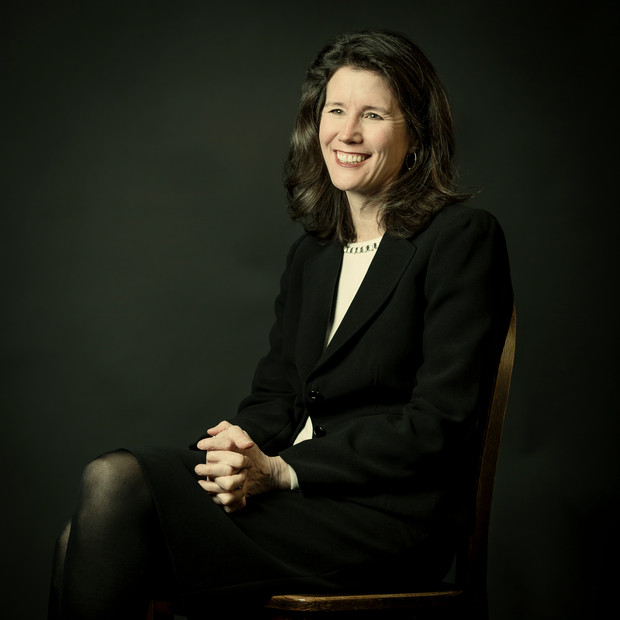 ‘How to integrate and synthesize things to get the job done’
‘How to integrate and synthesize things to get the job done’
Anne Miller ’07 M.B.A.
Anne Miller came to the Full-time UST MBA program wanting to steer her career in a different direction. The UST economics undergraduate earned her M.B.A. in finance and entrepreneurship, leading to a career at the Catholic Community Foundation. In less than six years, she’s moved up three times in the organization of which she is now the president.
When her fellow students elected her as CEO, she was at first reluctant to accept the position, being a mother of three.
“Leadership is a privilege, an honor and a big responsibility,” Miller said. “You have to deal effectively with conflict, and be able to negotiate and delegate. You test not only your IQ as a leader, but your EQ.
“People have varying levels of commitment to projects and are pulled in different ways. It’s a microcosm of my role now. People have personal lives. They have personal issues. They have personal goals that can be the same or different from what you’re trying to accomplish as a team. You have to find balance. You have to respect those things, but you have to figure out a way to lead and ultimately get the job done.”
Miller said what left the biggest impression on her was the systems thinking Associate Professor Tom Ressler taught in the Statistical Methods for Decision Making course.
“For the first time in my career, the light bulb went off on systems thinking – how everything’s related to everything else,” she said. “That’s certainly what they’re trying to get across in a capstone course. You face complex, multifunctional strategic challenges. You have to figure out how to integrate and synthesize things to get the job done. That seed was really planted in the stats course, unexpectedly, and I was able to test that out in the capstone course. And I give that all the credit in my current position and my progression in my current organization.”
